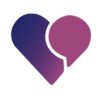An Underrecognized Compulsive Disorder

What is Trichotillomania?
Trichotillomania or ‘Trich’ involves obsessive compulsive hair pulling from any area of the body, most often from the scalp, eyebrows and eyelashes. It is often done to relieve tension as with OCD but can also be done for pleasure or subconsciously and is commonly comorbid with other obsessive behaviours such as nail biting and skin picking[1].
Diagnosis: International Classification of Diseases (ICD-10)
“A disorder characterized by noticeable hair-loss due to a recurrent failure to resist impulses to pull out hairs. The hair-pulling is usually preceded by mounting tension and is followed by a sense of relief or gratification. This diagnosis should not be made if there is a pre-existing inflammation of the skin, or if the hair-pulling is in response to a delusion or a hallucination.”[2]
The Lived Experience
Hair pulling often brings with it embarrassment and shame, heightening risk of social isolation, depression and anxiety[3]. The physical effects are also adverse, in terms of scarring and infections in areas that are pulled from. Furthermore, it is common for individuals with trichotillomania to eat their hair (trichophagia), which can lead to hair balls building up in the digestive tract, causing uncomfortable and potentially life-threatening digestive complications and obstructions[4]

Treatments for Trichotillomania
- Cognitive Behavioural Therapy (CBT): CBT for trichotillomania comes in the form of habit reversal training, whereby the patient and therapist work to replace maladaptive habits and thoughts with more rational ones. For example, identifying and avoiding potential triggers for pulling or focusing the anxiety on something less harmful such as a stress ball.
- Family therapy: Involving family in behavioural treatment plans can increase their effectiveness, particularly for children with trichotillomania[5]
- Relaxation Training: Breathing techniques, yoga and meditation can help those with trichotillomania process feelings of tension and offer an alternative relief to hair pulling[6]
- Medication: As with most obsessive-compulsive disorders, medication is not recommended as a direct treatment, however antidepressants can be used to treat commonly comorbid illnesses such as depression and anxiety[7]
References
Keuthen, N. J., Curley, E. E., Scharf, J. M., Woods, D. W., Lochner, C., Stein, D. J., … & Grant, J. E. (2016). Predictors of comorbid obsessive-compulsive disorder and skin-picking disorder in trichotillomania. Annals of Clinical Psychiatry: Official Journal of the American Academy of Clinical Psychiatrists, 28(4), 280-288.
Grant, J. E., Redden, S. A., Leppink, E. W., & Chamberlain, S. R. (2017). Trichotillomania and co-occurring anxiety. Comprehensive psychiatry, 72, 1-5.
Özten, E., Sayar, G. H., Eryılmaz, G., Kağan, G., Işık, S., & Karamustafalıoğlu, O. (2015). The relationship of psychological trauma with trichotillomania and skin picking. Neuropsychiatric disease and treatment, 11, 1203–1210. https://doi.org/10.2147/NDT.S79554
Grant, J. E., & Chamberlain, S. R. (2018). Salivary sex hormones in adolescent females with trichotillomania. Psychiatry research, 265, 221-223.
[1] Snorrason, I., Belleau, E. L., & Woods, D. W. (2012). How related are hair pulling disorder (trichotillomania) and skin picking disorder? A review of evidence for comorbidity, similarities and shared etiology. Clinical psychology review, 32(7), 618-629.
[2] World Health Organization. (2019). International statistical classification of diseases and related health problems (11th ed.). https://icd.who.int/
[3] Grant, J. E., & Chamberlain, S. R. (2016). Trichotillomania. American Journal of Psychiatry, 173(9), 868-874.
[4] Snorrason, I., Ricketts, E. J., Stein, A. T., & Björgvinsson, T. (2021). Trichophagia and trichobezoar in trichotillomania: a narrative mini-review with clinical recommendations. Journal of Obsessive-Compulsive and Related Disorders, 31, 100680.
[5] Flessner, C. A., Penzel, F., Board, T. L. C. S. A., & Keuthen, N. J. (2010). Current treatment practices for children and adults with trichotillomania: consensus among experts. Cognitive and Behavioral Practice, 17(3), 290-300.
[6] Sarah H, M., Hana F, Z., Hilary E, D., & Martin E, F. (2013). Habit reversal training in trichotillomania: guide for the clinician. Expert Review of Neurotherapeutics, 13(9), 1069-1077.
[7] Sani, G., Gualtieri, I., Paolini, M., Bonanni, L., Spinazzola, E., Maggiora, M., Pinzone, V., Brugnoli, R., Angeletti, G., Girardi, P., Rapinesi, C., & Kotzalidis, G. D. (2019). Drug Treatment of Trichotillomania (Hair-Pulling Disorder), Excoriation (Skin-picking) Disorder, and Nail-biting (Onychophagia). Current neuropharmacology, 17(8), 775–786. https://doi.org/10.2174/1570159X17666190320164223
